4. Multiobjective Optimization
�
4. Multiobjective Optimization
1�
2�
3�
Basic Concepts of Multiobjective Optimization
1.1 Multiobjective Optimization Problem (MOP)
1.2 Pareto (or Nondominated) Optimal Solutions
1.3 Preference Structures
Multiobjective Genetic Algorithm
2.1 Features of Genetic Search & Fitness Assignment Mechanism
2.2 Fitness Sharing & Population Diversity
2.3 Concept of Pareto Solution & Pareto GA Procedure
Fitness Assignment Mechanism
3.1 Vector Evaluation Approach
3.2 Pareto Ranking Approach
3.3 Weighted-sum Approach
3.4 Elitist Preserve Approach
�
4. Multiobjective Optimization
4�
Compromise Approach & Distance Method
4.1 Compromise Approach
4.2 Distance Method
4�
Performance Measures
5.1 Reference solution set S*
5.2 Performance Measures
5�
Applications of Multiobjective Optimization
Problems
6.1 Bicriteria Linear Transportation Problem
6.2 Bicriteria Minimum Spanning Tree Problem
6.3 Bicriteria Nonlinear Programming Problem
6.4 Bicriteria Network Design Problem
�
4. Multiobjective Optimization
1�
Basic Concepts of Multiobjective Optimization
1.1 Multiobjective Optimization Problem (MOP)
1.2 Pareto (or Nondominated) Optimal Solutions
1.3 Preference Structures
2�
3�
4�
4�
5�
Multiobjective Genetic Algorithm
Fitness Assignment Mechanism
Compromise Approach & Distance Method
Performance Measures
Applications of Multiobjective Optimization
Problems
�
1.1 Multiobjective Optimization Problem (MOP)
Optimization deals with the problem of seeking solutions
over a set of possible choices to optimize certain criteria.
所谓的优化就是在某种规则下,使得个体的性能最优!
Multiobjective Optimization Problems (MOP) arise in the
design, modeling, and planning of many complex real
systems.
Almost every important real-world decision making problem
involves multiple and conflicting objectives.
Genetic Algorithms have received considerable attention as
a novel approach to multiobjective optimization problem.
Need to be tackled while respecting various constraints
Leading to overwhelming problem complexity.
(实际优化问题的目标函数往往是多个且相互冲突)
�
1.1 Multiobjective Optimization Problem (MOP)
Multiobjective optimization problem with q objective functions
and m nonlinear constraints can be represented:
,
(
f
2
,2,1
i
),
x
,
z
q
f
q
(
x
)}
(
f
1
z
1
x
(
)
0
max
{
),
x
z
2
,0
m
s.
t.
g
i
x
The feasible region in the decision space denoted by the set S, is
as follows:(决策空间,可行域)
The feasible region in the criterion space denoted by the set Z, is
as follows:(目标空间)
{
n
|R
,2,1
g
i
,
,
m
(
)
x
i
S
}0
x
,0
x
Z
z
{
q
|R
z
1
f
1
(
x
),
z
2
f
2
(
),
x
,
z
q
f
q
(
xx
),
}
S
�
Soft Computing Lab.
7
�
z
1
z
2
g
1
g
2
,
)
(
x
(
x
)
(
f
1
(
f
2
xx
2
1
)
x
3
3
)
x
x
2
x
1
xx
1
2
x
x
2
2
1
2
xx
2
1
2
2
0
2f
2z
max
max
s.
t.
3x
S
2x
1
2
3
1x
1
0
0
3
8
3
2
1
1z
0
3z
Z
4z
1
4
3
2
3
1f
4x
2x
1
2
3
1x
0
Soft Computing Lab.
8
�
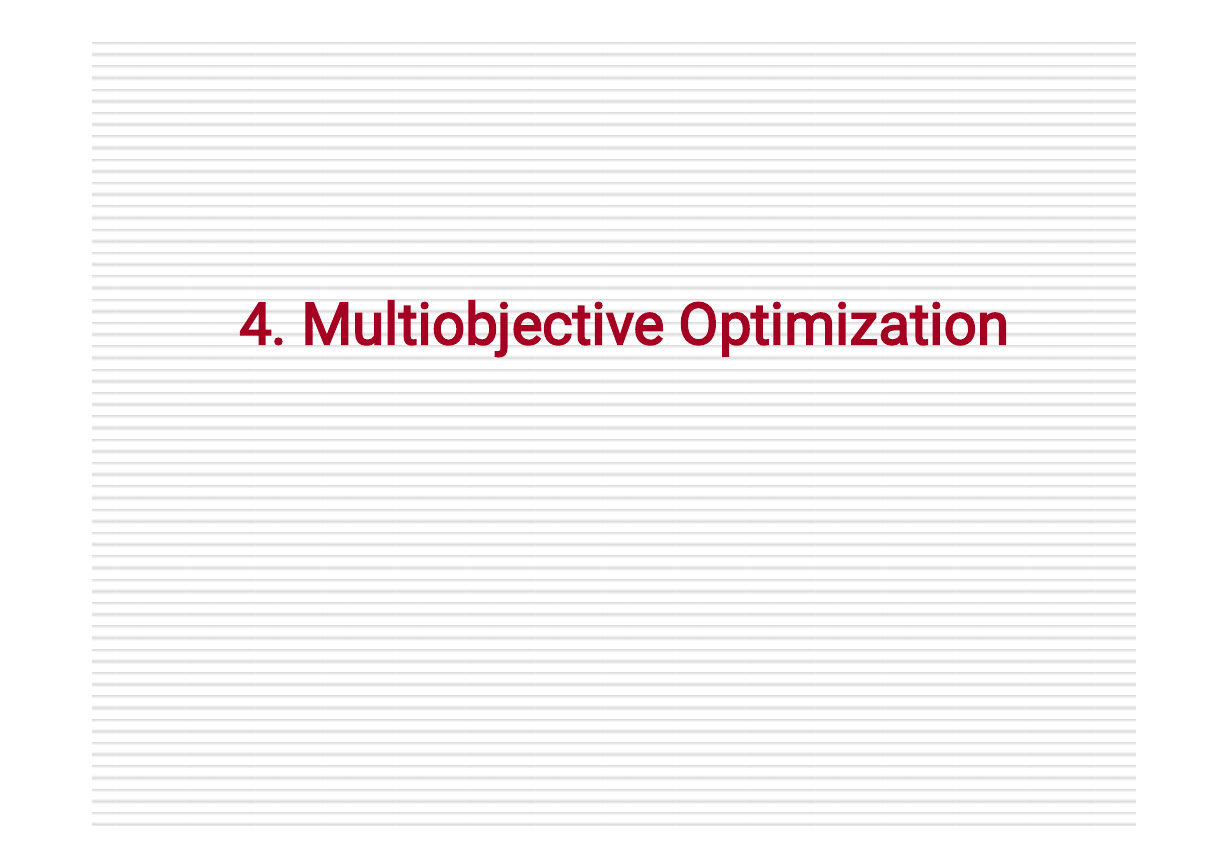
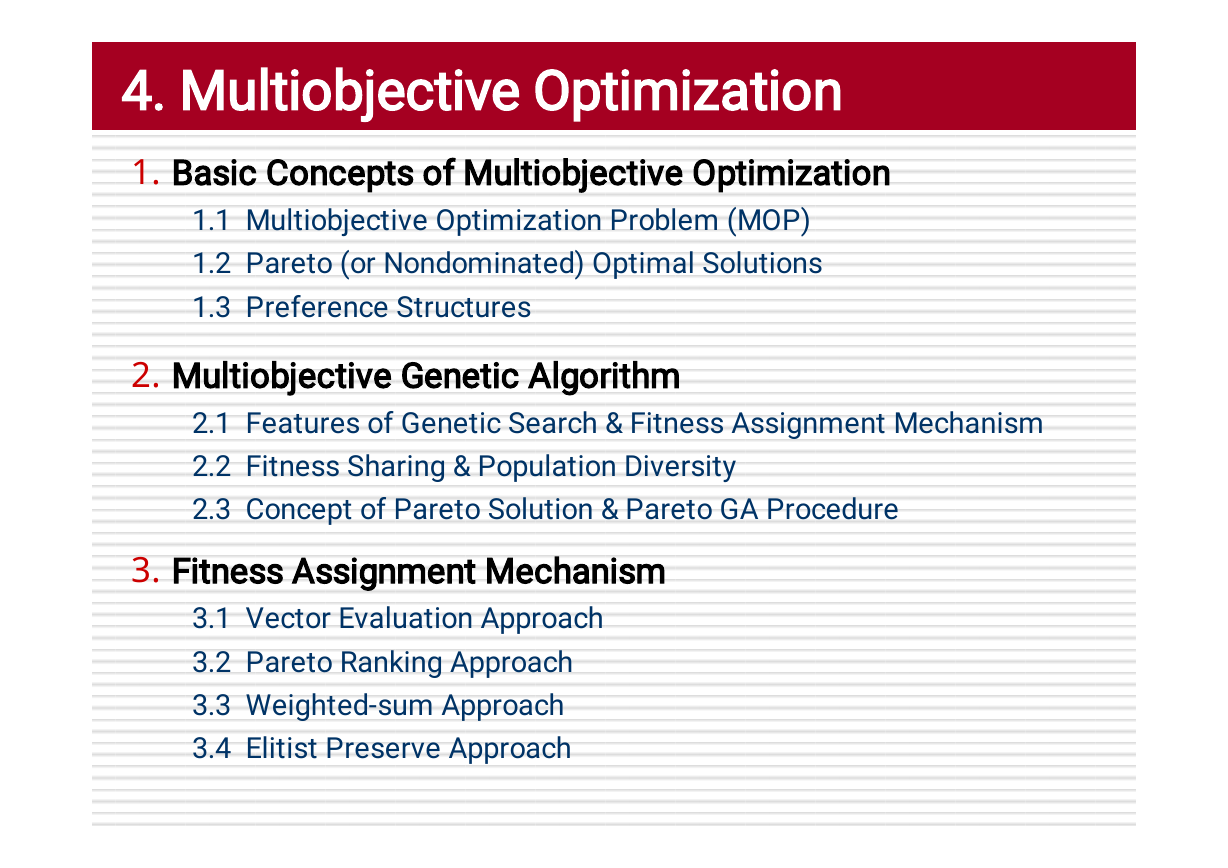
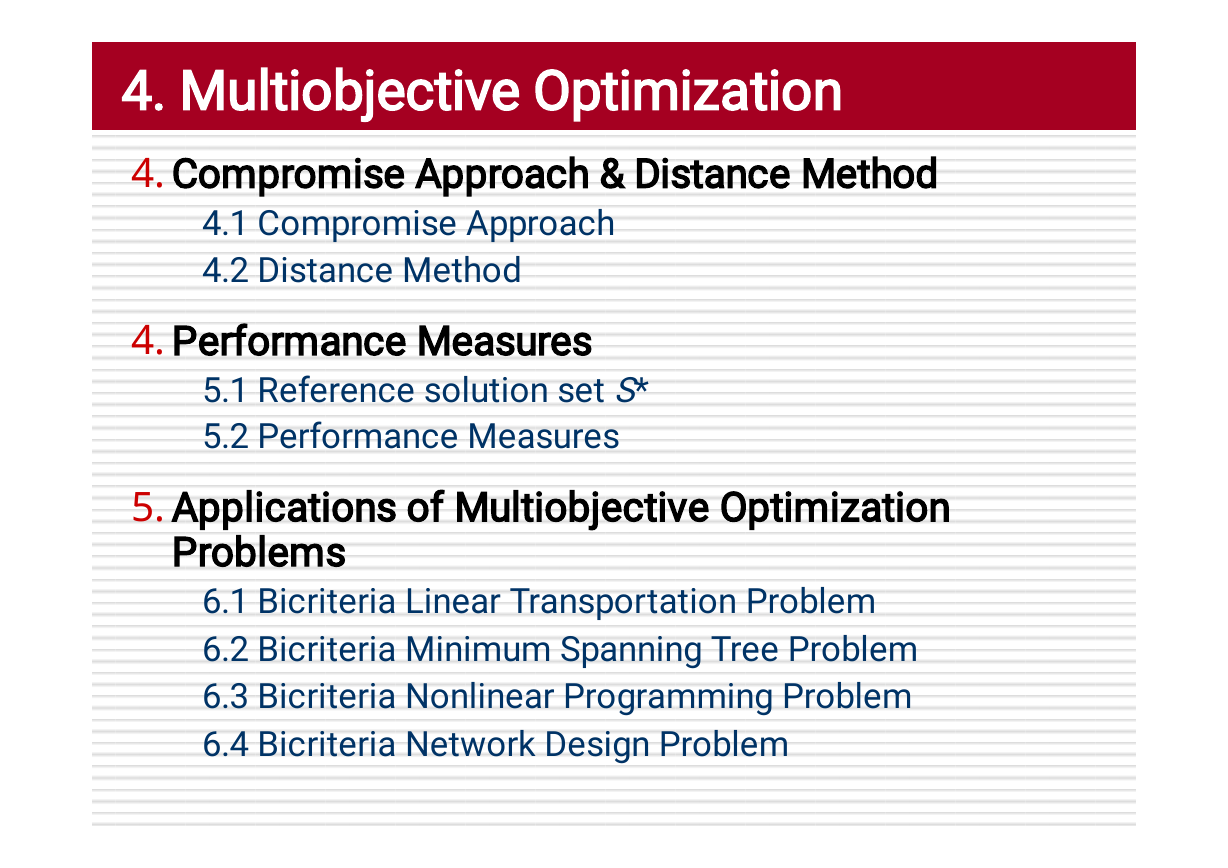
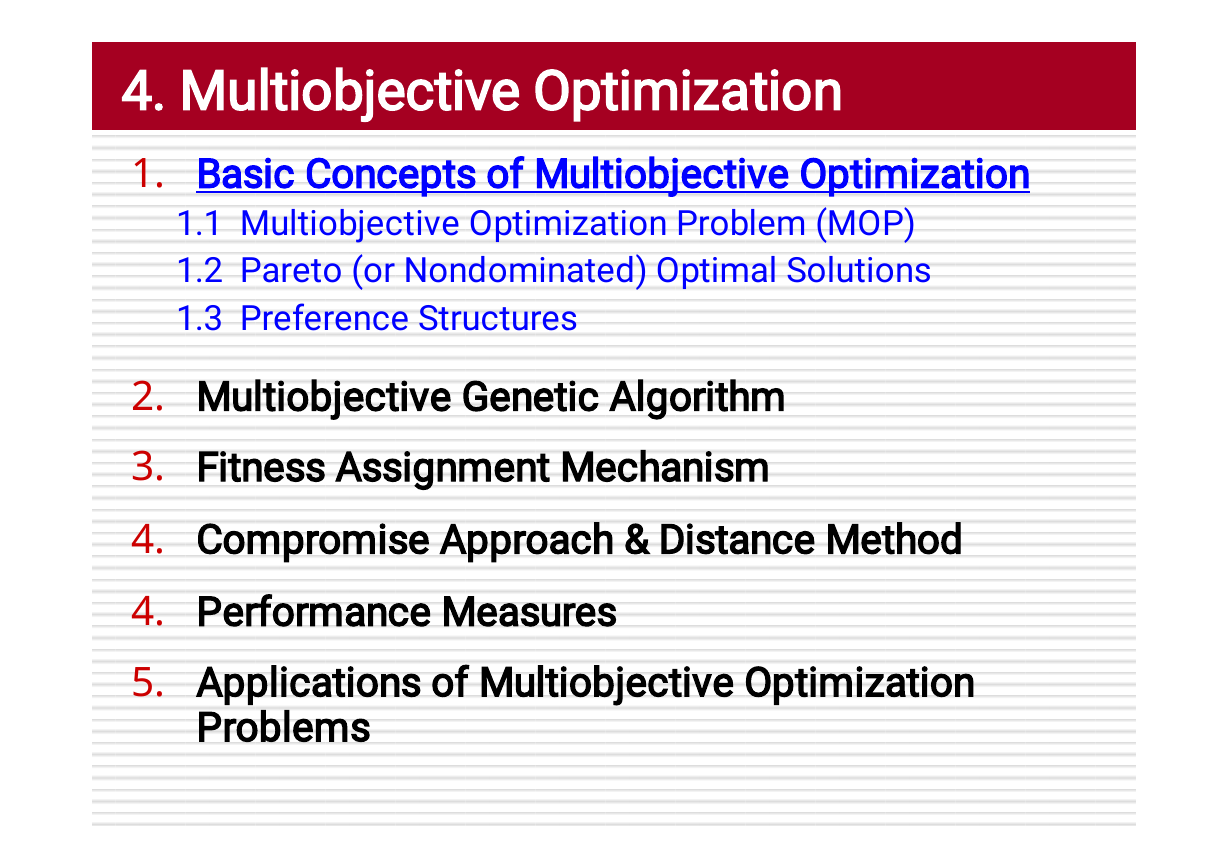

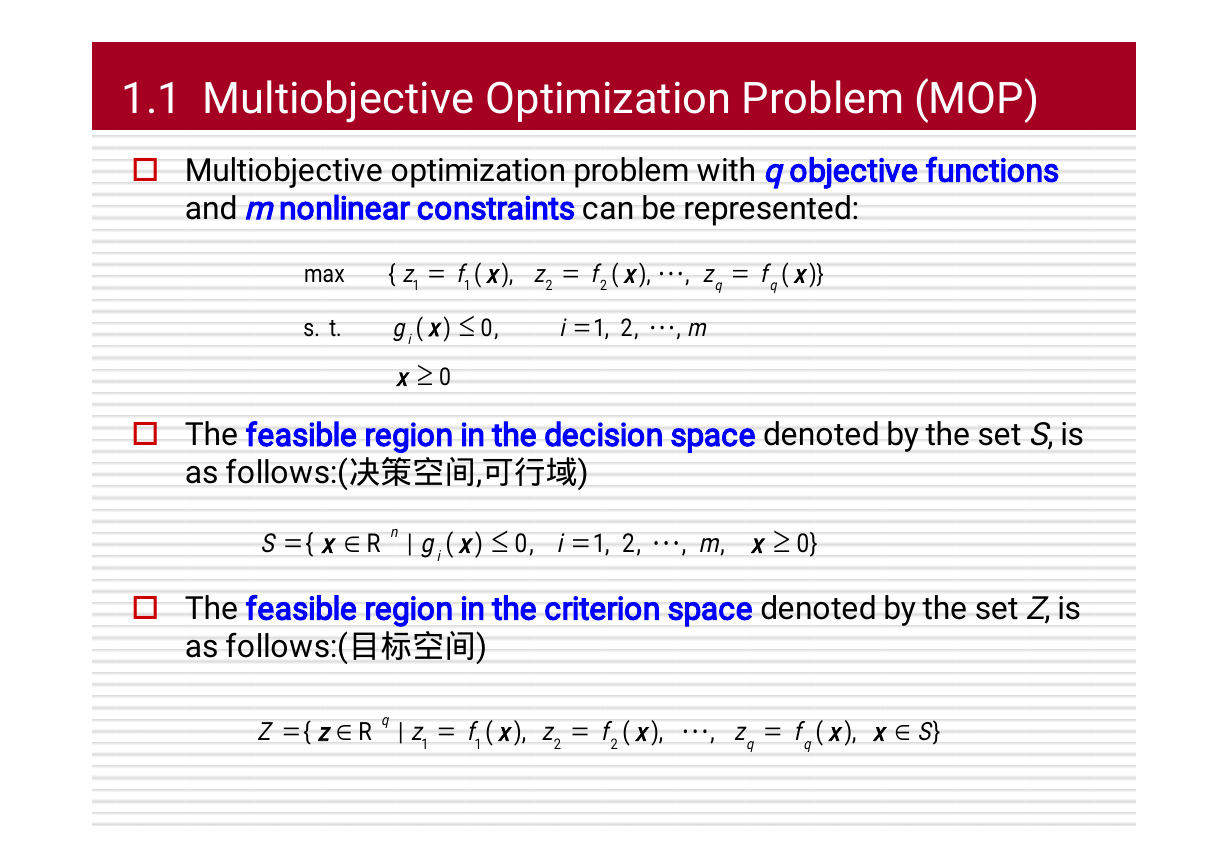
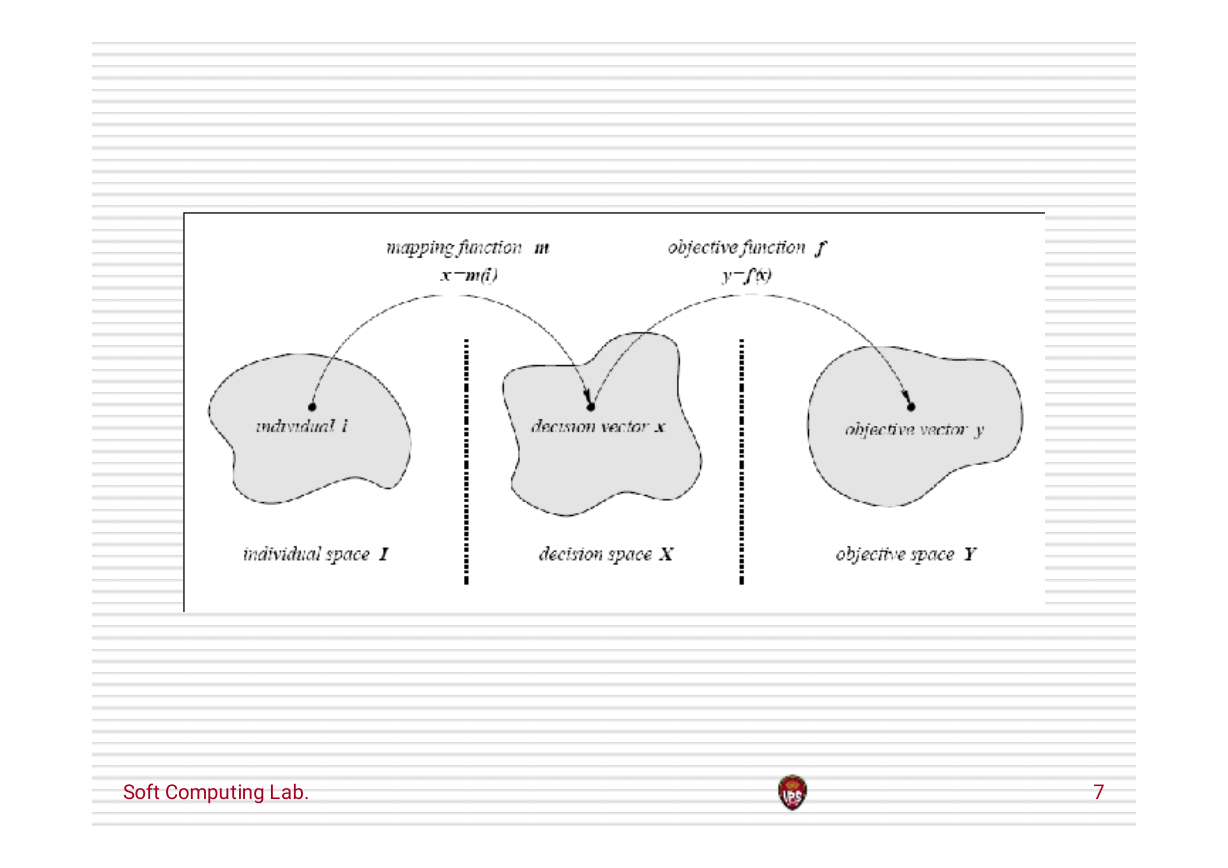
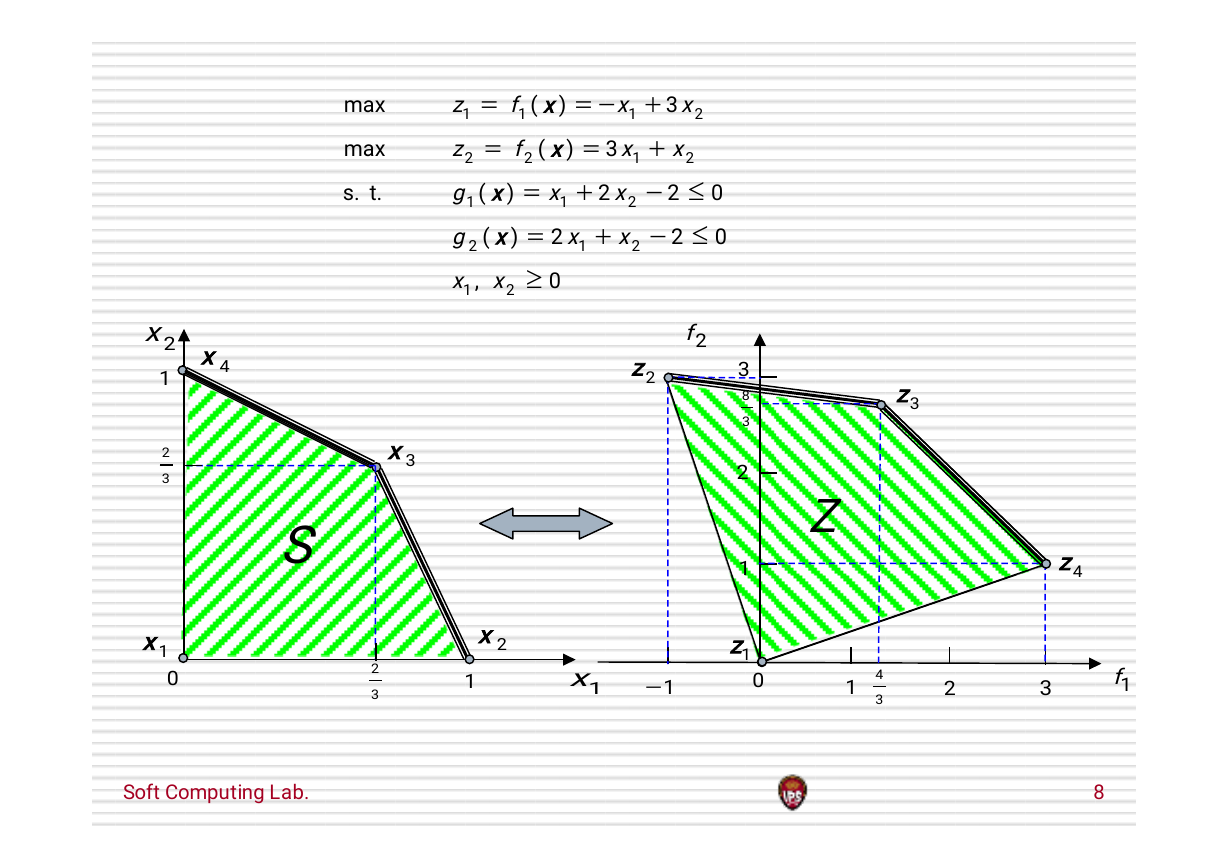








 2023年江西萍乡中考道德与法治真题及答案.doc
2023年江西萍乡中考道德与法治真题及答案.doc 2012年重庆南川中考生物真题及答案.doc
2012年重庆南川中考生物真题及答案.doc 2013年江西师范大学地理学综合及文艺理论基础考研真题.doc
2013年江西师范大学地理学综合及文艺理论基础考研真题.doc 2020年四川甘孜小升初语文真题及答案I卷.doc
2020年四川甘孜小升初语文真题及答案I卷.doc 2020年注册岩土工程师专业基础考试真题及答案.doc
2020年注册岩土工程师专业基础考试真题及答案.doc 2023-2024学年福建省厦门市九年级上学期数学月考试题及答案.doc
2023-2024学年福建省厦门市九年级上学期数学月考试题及答案.doc 2021-2022学年辽宁省沈阳市大东区九年级上学期语文期末试题及答案.doc
2021-2022学年辽宁省沈阳市大东区九年级上学期语文期末试题及答案.doc 2022-2023学年北京东城区初三第一学期物理期末试卷及答案.doc
2022-2023学年北京东城区初三第一学期物理期末试卷及答案.doc 2018上半年江西教师资格初中地理学科知识与教学能力真题及答案.doc
2018上半年江西教师资格初中地理学科知识与教学能力真题及答案.doc 2012年河北国家公务员申论考试真题及答案-省级.doc
2012年河北国家公务员申论考试真题及答案-省级.doc 2020-2021学年江苏省扬州市江都区邵樊片九年级上学期数学第一次质量检测试题及答案.doc
2020-2021学年江苏省扬州市江都区邵樊片九年级上学期数学第一次质量检测试题及答案.doc 2022下半年黑龙江教师资格证中学综合素质真题及答案.doc
2022下半年黑龙江教师资格证中学综合素质真题及答案.doc